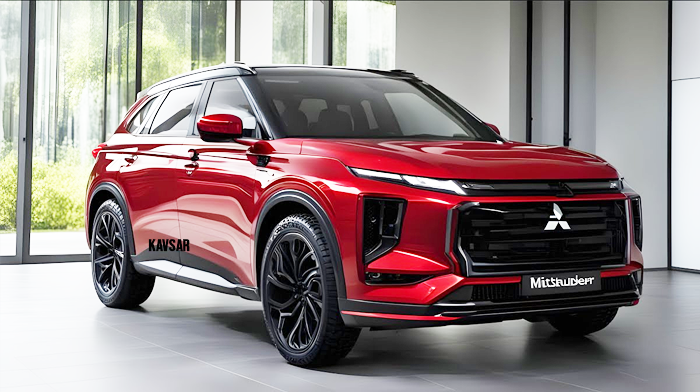The 2025 Mitsubishi Outlander Hybrid presents an eye-catching exterior, competitive tech offerings, and a 38-mile EV range. But beneath its bold styling and value-focused pricing lies a mixed driving experience. From its sluggish fuel economy after the battery drains to a tiny third row, the Outlander Hybrid leaves us questioning whether it can stand tall against more established competitors like the Toyota RAV4 Prime, Hyundai Tucson Hybrid, or Kia Sportage Hybrid.
New 2025 Mitsubishi Outlander Hybrid

For the 2025 model year, Mitsubishi adds a few updates to its Outlander Hybrid. Heated front seats now come standard across all trims, with the SEL gaining a heated steering wheel and panoramic sunroof. Mitsubishi has also extended the trial period for its Connect Safeguard Services from two to five years, but remote services like ignition and parental control are only available for the first 12 months. However, unlike the standard Outlander, the hybrid version remains largely unchanged.
Pricing and Which One to Buy
With pricing starting at $42,145 and rising to $53,355, the Outlander Hybrid offers several trim levels, each providing different features:
- ES – $42,145
- SE – $45,010
- Ralliart – $48,000 (est)
- SEL – $48,310
- SEL Black Edition – $50,810
- SEL Platinum Edition – $53,355
For value-conscious buyers, the SE trim strikes the best balance of price and features. It adds 20-inch wheels, a power liftgate, an upgraded 9-inch infotainment screen with wireless connectivity, and heated front seats, among other perks. The available Tech Package further enhances the offering with a panoramic sunroof, Bose stereo system, and auto-dimming rear-view mirror.
Powertrain and Performance: Mixed Driving Experience
Under the hood, the Outlander Hybrid combines a 2.4-liter four-cylinder engine with two electric motors, offering a total of 248 horsepower. While this hybrid system provides brisker acceleration than the non-hybrid version (with a 0-60 mph time of 6.6 seconds), it doesn’t deliver the most engaging driving experience. The ride is comfortable, but the handling lacks the athleticism you’ll find in models like the Dodge Hornet Hybrid or Mazda CX-50.
Braking also feels a bit off, with a squishy pedal, though steering paddles allow for adjustable regenerative braking. When set to maximum, you can almost enjoy one-pedal driving, reducing the need for constant brake use.
Range, Charging, and Battery Life: Not Quite Class-Leading
With its 16.8 kWh battery, the Outlander Hybrid offers 38 miles of electric-only driving range, which surpasses the Hyundai Tucson and Ford Escape PHEVs but falls short of the Toyota RAV4 Prime’s 42-mile EV range. However, charging the battery can be a hassle due to its CHAdeMO charging port, a system that’s quickly becoming outdated and may be hard to find at public charging stations.
Charging from home on a standard outlet takes about 6.5 hours, while the optional DC fast-charger can help, albeit with the inconvenience of its limited compatibility.
Fuel Economy and Real-World MPG: Disappointing Efficiency
According to the EPA, the Outlander Hybrid manages 25 mpg in the city and 27 mpg on the highway when running solely on gasoline. Factoring in electric driving, it achieves 64 MPGe. These figures fall behind many of its competitors. During real-world testing at highway speeds, we recorded just 25 mpg using gasoline alone and 44 MPGe when factoring in the electric range. This places the Outlander behind rivals like the Ford Escape Hybrid and Toyota RAV4 Prime in terms of overall fuel efficiency.
Interior, Comfort, and Cargo: Premium Feel, Tight Space
Mitsubishi has improved the interior quality of the Outlander Hybrid, swapping out cheap plastics for a more refined, modern design. Higher trims offer luxurious touches like a 12.3-inch digital gauge cluster and head-up display. While the first two rows provide ample room for passengers, the third row remains cramped, offering minimal legroom. Only the Volkswagen Tiguan competes in this class with a third-row option, though it is exclusive to front-wheel drive models.
In terms of cargo, the Outlander Hybrid has improved over its predecessor, offering 64 cubic feet of storage behind the first row and 31 cubic feet behind the second. The third row, however, leaves just 13 cubic feet for storage.
Infotainment and Connectivity: Competitive but Not Class-Leading
The SE trim and above boast a 9.0-inch infotainment screen, compared to the 8.0-inch unit on the base ES trim. Both systems support Apple CarPlay and Android Auto, though only the larger screen allows for wireless connectivity. USB ports are conveniently located in the center stack, and higher trims come with a Bose nine-speaker sound system, while base models make do with six speakers.
Safety and Driver-Assistance Features: Solid Offering
Mitsubishi equips the Outlander Hybrid with several standard safety features, such as automated emergency braking and lane-departure warning. To access more advanced systems like adaptive cruise control and lane-keeping assist, you’ll need to step up to the SE or SEL trims.
Key safety features include:
- Standard forward-collision warning and automated emergency braking
- Standard lane-departure warning
- Available adaptive cruise control and lane-keeping assist
Warranty and Maintenance: Strong Coverage, No Free Maintenance
Mitsubishi’s warranty coverage is among the best in its class, matching industry leaders like Kia and Hyundai. However, it does fall short in one area: no complimentary scheduled maintenance.
- Limited warranty: 5 years or 60,000 miles
- Powertrain warranty: 10 years or 100,000 miles
- Hybrid components: 10 years or 100,000 miles
Conclusion: A Bold Entry, But Middling Performance
The 2025 Mitsubishi Outlander Hybrid offers a compelling value proposition on paper, with competitive pricing, impressive EV range, and a stylish exterior. However, its uninspiring driving dynamics, outdated charging infrastructure, and middling fuel economy leave it lagging behind more refined and efficient alternatives. If you’re looking for a family-friendly SUV with a bit of electric range, it’s worth considering, but you’ll find better options elsewhere in the segment.
